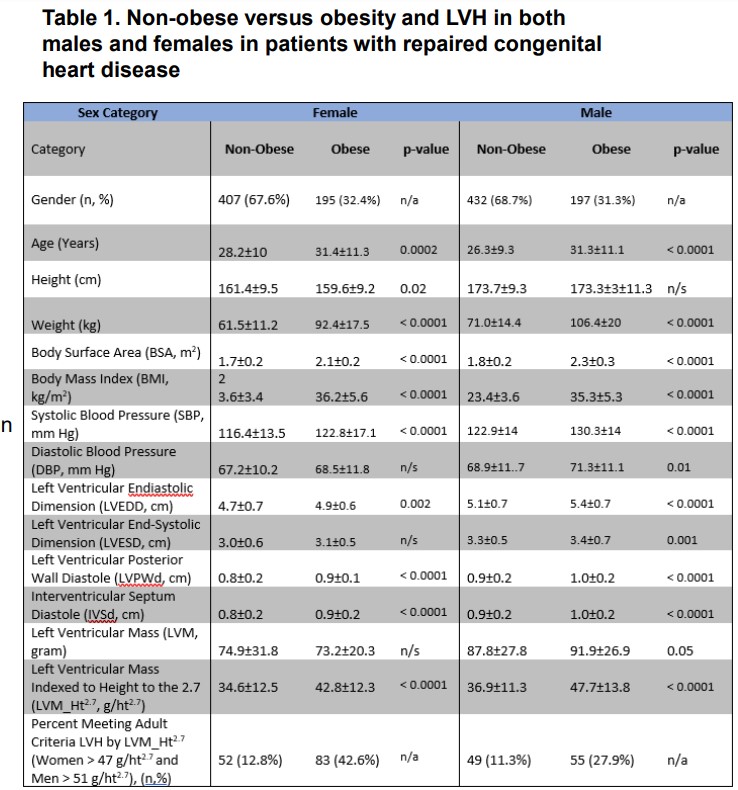Cardiology
Cardiology 1
212 - Prevalence of Left Ventricular Hypertrophy in Adolescents and Adults with Repaired Congenital Heart Disease and Obesity
Publication Number: 212.203
- ML
Matthew P. Laubham, DO
Fellow
Nationwide Children's Hospital
Columbus, Ohio, United States
Presenting Author(s)
Background:
Obesity and hypertension (HTN) is common and leads increased morbidity. Left ventricular hypertrophy (LVH) is associated with HTN and obesity, and is a risk factor for cardiovascular events in adulthood. Over the last 50 years, life expectancy for patients with congenital heart disease (ACHD) has increased, and they have higher rates of HTN along with a similar risk to obesity as those without CHD. There is a paucity of data on obesity and HTN impact on the LVH in rCHD patients.
Objective: The aim of our study was to determine the prevalence of LVH in adults with repaired congenital heart disease and obesity.
Design/Methods: We retrospectively analyzed echocardiograms with a diagnosis code of CHD from 2012 to 2019. Patients aged ≥18 years with documented BP, height, weight and echocardiography measurement for LVMiHT2.7 were included. Patients were grouped by sex (male and female) and into non-obese (BMI < 30 kg/m2) and obese (BMI >30 kg/m2). he prevalence of LVH was reported in each group defined as LVMi-HT2.7 ≥ their respective values in each sex (≥ 51 g/ht2.7 in men, ≥ 47 g/ht2.7 in women).
Results:
Table 1 details findings of 1231 rCHD patients, 629/1231 (51%) male) and age 28.4±10.1 yrs. Obesity is seen in 392/1231 (31.8%) and is associated with higher SBP (116.4±13.5 vs 122.8±17.1 mm Hg p < 0.0001 for women and 122.9±14 vs 130.3±14 mm Hg for men, p < 0.0001) and LVM/HT2.7 (34.6±12.5 vs 42.8±12.3, p < 0.0001 for woman and 36.9±11.3 versus 47.7±13.8, p < 0.0001 for men). More obese patients met criteria for LVH, 52/407 (12.8%) vs 83/195 (42.6%) of woman and 49/432 (11.3%) vs 55/197 (27.9%) of men.
Conclusion(s): Adults with repaired CHD and obesity have a high prevalence of elevated BP, HTN, and LVH. These findings support the importance of early detection and screening for high BP in this group because there are more adults than children with congenital heart disease, and these patients are affected by the same cardiovascular risks of aging and obesity as those without congenital heart disease. Future studies will be needed to determine longitudinal changes and the influence of the cardiac lesion in this group, as well as the long term mortality affect.
